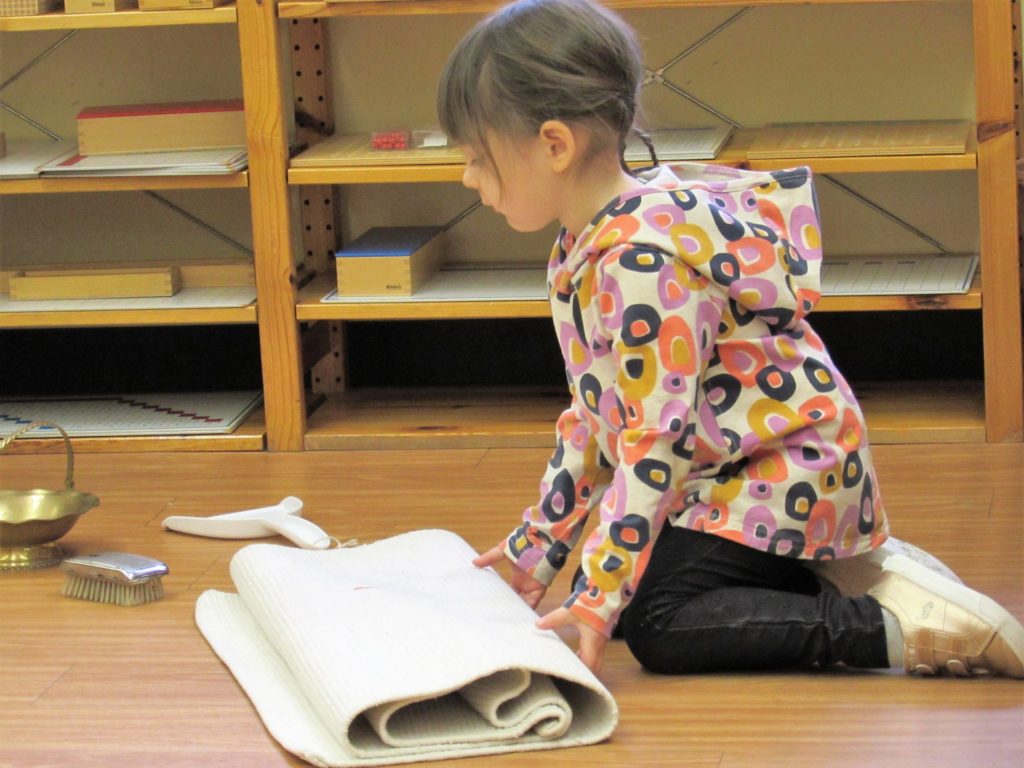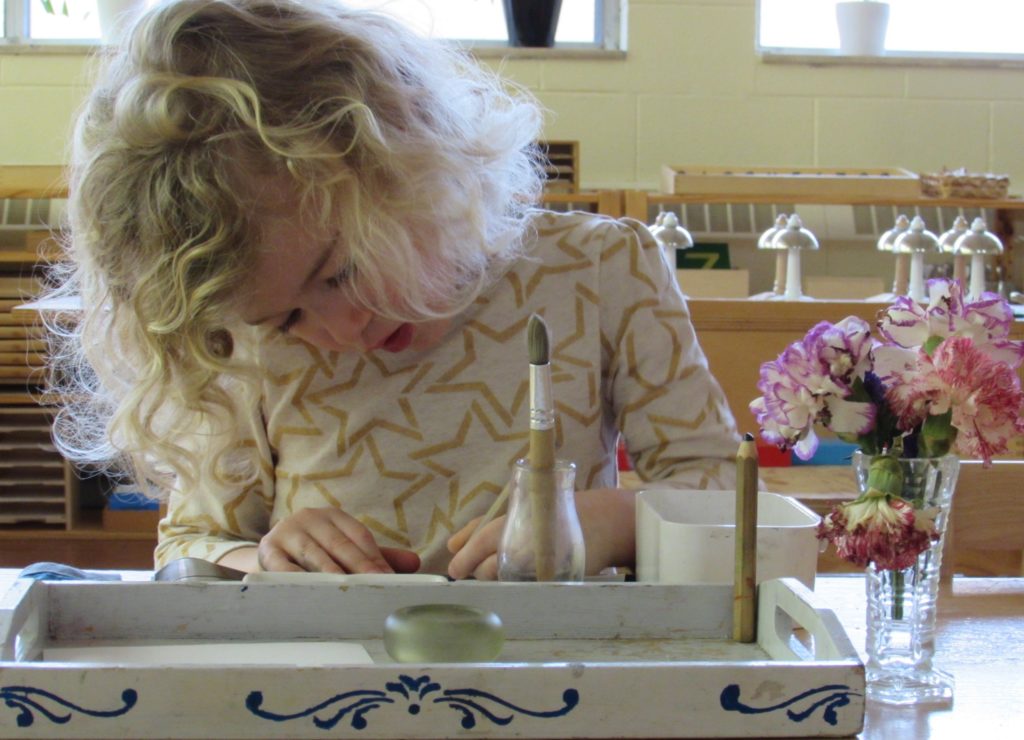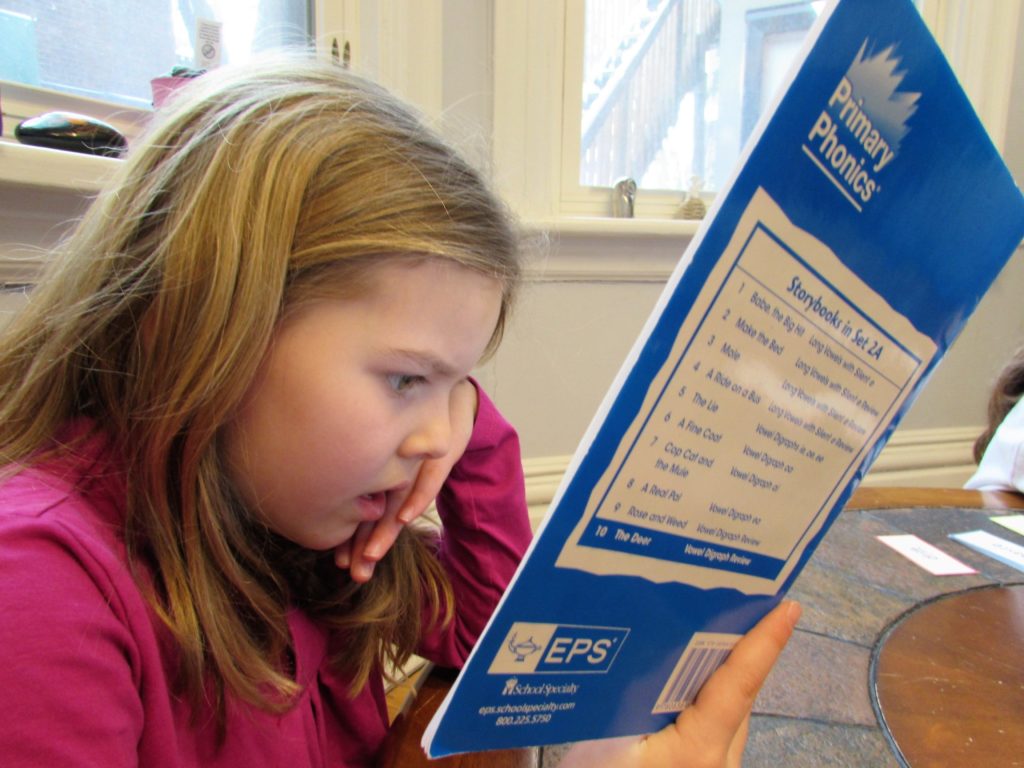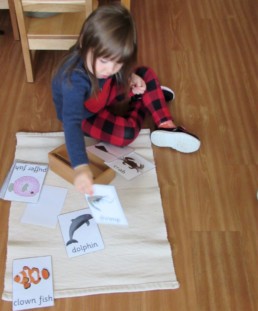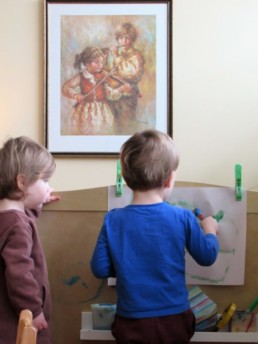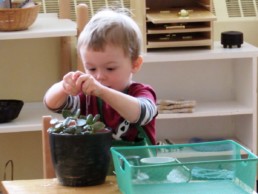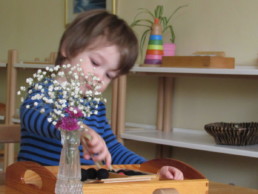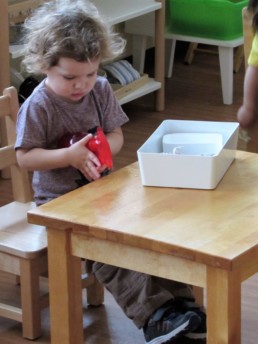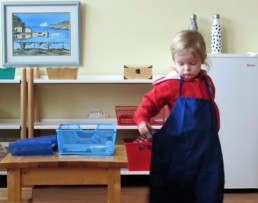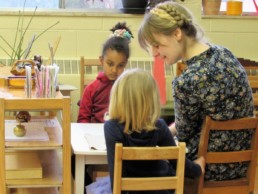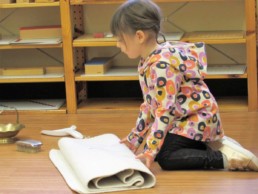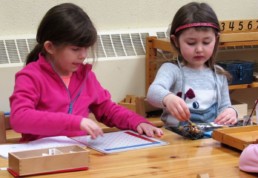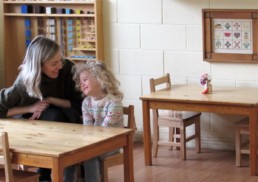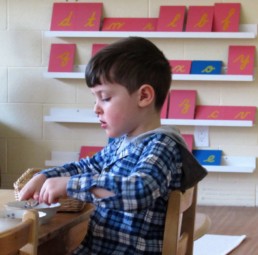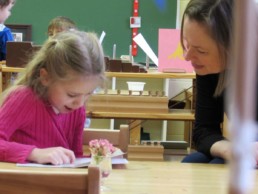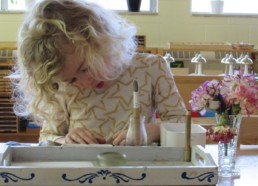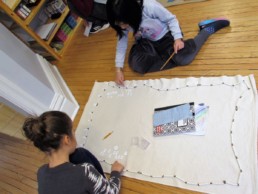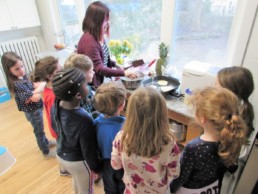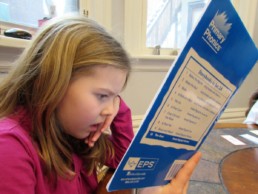Lyonsgate Weekly Update | Friday, Feb. 28, 2020
Hello Lyonsgate Montessori Families,
Happy Friday! Welcome back to winter. Let’s pretend this was the last blast of cold before it warms up for a wonderful and well deserved March Break for all of your hard working Montessori children.
This week, your children’s classroom assistants have each focused on a specific material that is meaningful to them. Whether it’s a favourite material to work with, a material that encompasses what Montessori offers to children, or a material that we may not always consider a part of standard classroom learning (see the Toddler update), Montessori materials are big part of all of our days.
Toddler:
Hello to all of our families in the Toddler program! I have been back with the Toddler class for almost a month now, and I have been enjoying the opportunity to get to know you and your children. As it turns out, I happened to have returned in the middle of a big developmental period for the class. A significant number of our students are making the exciting (and sometimes eventful) transition from diapers to underwear. I wanted to give you some insight on what that looks like for us.
At its bare bones, our typical chain of events is to start off by inviting the children to sit on the potty throughout the day, move on to having them wear underwear in the mornings, then through the afternoon when they are awake, then all day. However, there is no set timeframe for this. The agency of the child is just as important here as it is in other aspects of the Montessori classroom. It is usually the case that the children themselves will tell us when they are ready to move to the next stage through actions such as coming to the bathroom unprompted or telling us that they want to leave their underwear on for a little longer. We prepare for ‘accidents’ from children that are still learning their bodies (pack extra clothes!) and let them try. Following the children’s lead in these cases is crucial in building their confidence and encouraging their development. That sense of agency can be fostered both in the classroom and at home by allowing children to be an active part of the process. They are more excited and eager to wear underwear that they get to choose for themselves. They should dress and undress themselves as much as possible to build up that feeling of ‘I can do it by myself’ that encourages them to keep going (which is why your child coming home with their pants on backwards is actually a good sign).
Unfortunately, it is quite common for children to initially do very well while wearing underwear and then lose some of their ambition once the novelty has worn off or some change has occurred in their lives. This can be discouraging, but it is very important to stay consistent. Sliding back into diapers can be tempting, but might undo a lot of progress. Don’t worry — they’ll get the hang of it eventually.
Have a good weekend,
Miss Colbert
Casa South
As many of you know, I began working at Lyonsgate and have been assisting in Casa South with Miss Moffatt and Mlle Paul since January. Of all the compelling materials I could write about, it is the simple floor mat that has struck me the most and seems to really symbolize so much of the Montessori method. The floor mats are rolled up and sit in a hamper and are not necessarily a material but are used with many of the materials in the classroom. I watch the children eagerly scan the classroom, searching for what work they will choose with such thought before they approach the mats.
It is not the floor mat itself that has wowed me but how the children use them. After seeing Miss Moffatt or Mlle Paul slowly and purposely make use of a mat, the children follow suit. First, they approach the hamper, select their mat, hold the mat with one hand clasping the top to pull it out of the bin, then with one hand also clasping the bottom they hold it close to their body, then carefully carry it over to an area on the floor. Although they could simply throw the mat on the floor, they don’t, because there is a process and it is respected. They carefully and evenly unroll their mat, then quietly and with purpose walk around the mat to ensure they aren’t impeding anyone else’s work and that there is a proper amount of space for their work. The floor mat provides a definitive area for them to do their work, which sits on the mat and never on the floor. I have seen children find some fluff on their mat, then promptly clean it with the correct materials. When they take care of their mat, they are also respecting the other materials they’re placing on it. When they are done, they carefully roll the mat, taking time to make sure it is even, then carry it back following the same expectations and carefully place it in the hamper. Respecting the materials is seen in every step of the process.
A few times, I’ve seen the younger ones quickly unroll their mat abruptly, but that has been followed by an older child quietly showing them the proper way. The simple mat even incites leadership, role modelling, and collaboration. Montessori is a beautiful, layered method that encompasses so much in even the small moments, and it’s a beautiful thing to watch your children continuously discover more of those layers.
Miss Folland
Casa North
Hello Casa North families,
Part of my role as the English Assistant in Casa North is to help engage children with the materials we have on the shelves in our Casa classroom. As more time passes in the classroom, I’ve had the opportunity to interact more and more with the materials. All of the materials are beautiful and logical. Not only that, but the work in the classroom is truly a joy to participate in. When the children see their teachers engaged with the work and learning new things, it ignites a desire to experience the same materials.
As someone with a background in mathematics education, some of my favourite materials are number and math based. One of these is the Montessori Stamp Game. This is one that I choose to work with when I do work in the classroom, but it’s also one that I work with the children on when they need guidance. It is a math manipulative that makes the learning of addition, subtraction, multiplication, and division a tactile and real experience. I think it’s absolutely beautiful to watch the children work with this material and come to understand the functions on a very comprehensive level.
Materials in the sensory area are also a favourite of mine as they are not only aesthetically pleasing but help children make sense of the world that they experience. These materials give children the language and comprehension to understand what their senses are revealing to them.
Even as an adult in this space, I find the materials give me a deeper understanding of the things that I know about the world. It is wonderful to watch your children experience this in their interactions with the materials in the classroom.
Ms. Sullivan
Elementary
Most of you are familiar with the Primary Phonics readers — the colour-coded set of readers children use when they are starting to develop their reading skills. While not the most riveting stories, they are widely used because they help children to move beyond single letter sounds and begin to learn how words are made from different combinations of letters.
In my work as a literacy development specialist I always present language as something we build with, as something we make things with, as something we construct with, and I do so for two primary purposes. First of all to guide children to understand that language, whether written, read, or spoken, works by combining ever-larger elements — from single letters, to combinations of letters to form different sounds, to syllables, to words, to phrases and clauses, to sentences, to paragraphs, and beyond. Second, to have children start to understand language as a human invention that they have control over. Language instruction can feel oppressive to children with all of its rules and spellings and capitalization and punctuation and exceptions to the rules, so working to have children view it as something to play with, as something to manipulate and make do whatever they want it to do, can make children more open and willing to engage with language. Language is something they can control.
The Primary Phonics readers are a solid step in this process. Each reader introduces or reviews a specific concept — short or long vowel sounds, vowel digraphs (combinations of vowels that work together to make a single sound, such as ie, oe, ee, oa, ea, etc.), consonant blends and digraphs (such as br, cl, sc, ft, mp, nd, ch, th, ph, etc.), and other constructions such as dge, igh, and soft and hard g and c sounds.
Each reader’s specific concept is highlighted on the inside cover along with the words containing the concept within the story. There is also a set of “sight words” in each book. These are words that break a rule somehow — a letter makes the wrong sound, for example — so they are words we have to learn to recognize by sight, as sounding them out won’t work. Sometimes, just reading the set of focus concept words or the set of sight words, or just reviewing the focus concept itself might be the best work for an individual child. Writing out the sets of words helps children learn them both visually and in a tactile way. Reading the same book more than once in one sitting can help children develop reading fluency and experience the joys of progress as they hear and feel their reading improve. Reading comprehension can also be assessed and developed in young readers by talking about the story once it has been read, and the experience of building and constructing with language can be offered by having children add to the story they have just read, either orally or in written form.
They may at first glance seem like simple little story books, but they are a learning tool we use in many ways to help children develop a sound relationship with language.
Thank you to all of our Elementary parents that were able to attend the French concert. We know that taking time off work to attend these short afternoon events can be tricky. Please know that all of us at Lyonsgate Elementary — both staff and students — greatly appreciate all of the efforts you can make to support not just your own children but all of our young learners.
Coming Up:
You will find up to date details about all Lyonsgate events on your online school calendar.
- One of your fellow Montessori parents submitted this free event at the Central branch of the Hamilton Public Library:
Sara Pipher Gilliam: Ophelia in 2020: Raising Strong Girls in Disruptive Times
Sunday, March 8th, 2:00 p.m.
Join us at Central Library for a 30 minute presentation, Q&A period, and book signing. Books will be available for purchase from Epic Books.
Twenty-five years after the release of this culture-changing title, Hamilton-based writer Sara Pipher Gilliam has co-authored a revised edition of the book. While the cultural landscape for girls has changed in many positive ways, today’s girls grapple with a new set of challenges. Sara will explore what parents and educators can do to mitigate these challenges and share strategies for raising confident, competent young women.
- March Break: March Break this year runs from March 13-23, inclusive. The first day back to school after March Break is Tuesday, March 24.
Photos
Remember to let us know if you ever want the full size image of a photo of your child, and that you can click on any image to view them all in a slideshow format.


